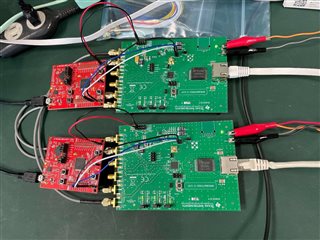Other Parts Discussed in Thread: DP83640
Thank you for your help.
DP83867E I am using two SGMII EVMs for back-to-back connection. There are no problems with basic operation of both 1000BASE-T and 100BASE-TX.
Currently, we are thinking of applying this to industrial Ethernet such as EtherCAT and CC-LinkIE TSN.
These industrial Ethernet devices can synchronize network-connected devices with high accuracy of less than 1 us. We have also confirmed that synchronization can be achieved using normal network wiring.
Here, I inserted a Back-to-Back connection test device using two DP83867E SGMII EVMs.
It has been confirmed that synchronization is possible with EtherCAT and CC-LinkIE TSN, but it has not been possible to ensure the standard accuracy of 1 us or less. I think this is probably due to the propagation delay of DP83867E. At this rate, we will not be able to meet the requirements of the standards, so we will not be able to achieve our goals.
As a method to solve this, for example, in CC-LinkIE TSN based on TSN technology, we think it may be necessary to take a method such as compensating for propagation delay with the transparent clock function of TSN, but TI's product Could you please suggest a way to solve this problem?
Thank you.






